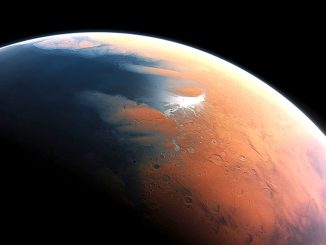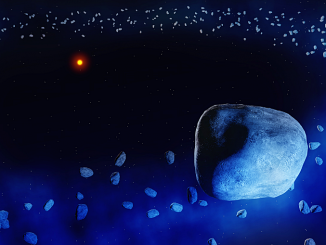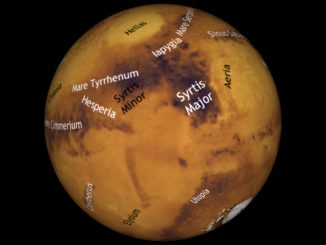
Mega-tsunamis ravaged shorelines of ancient Martian ocean
The geologic shape of what were once shorelines through Mars’ northern plains 3.4 billion years ago convinces scientists that two large meteorites – hitting the planet millions of years apart – triggered a pair of mega-tsunamis. These gigantic waves, likely 120 metres high, forever scarred the Martian landscape and yielded evidence of cold, salty oceans.









